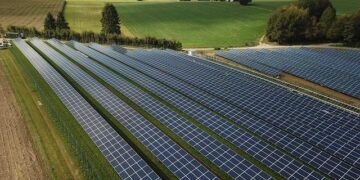A groundbreaking study published in Nature reveals that the biomass movement generated by humans now surpasses that of all land animals combined. This striking finding underscores the profound impact of human activity on the planet’s ecosystems, highlighting how our daily movements-from walking and commuting to industrial operations-have reshaped the natural flows of biomass on Earth. Scientists suggest that this unprecedented shift not only reflects humanity’s dominance but also raises critical questions about the future of wildlife and ecological balance in an increasingly human-driven world.
Human Biomass Movement Surpasses That of All Land Animals Combined Reveals New Study
In a groundbreaking analysis published recently, researchers have quantified the scale of human movement by biomass and astonishingly found it surpasses the combined movement of all terrestrial animals. This calculation includes the weight of muscle and fat actively engaged during physical activities such as walking, running, and manual labor. The results underscore the unparalleled impact of humans-not only through technological advancement but physically reshaping the dynamics of biomass mobility on the planet.
Key findings from the study include:
- Human biomass movement annually totals an estimated ~4.5 million metric tons, exceeding all land animals combined.
- The average daily movement per person has increased with urbanization but varies significantly across regions.
- Domesticated animals contribute substantially less to total biome biomass movement than human activities.
| Category | Annual Biomass Movement (Million Tons) | Percentage of Total |
|---|---|---|
| Humans | 4.5 | 52% |
| Wild Land Animals | 3.2 | 37% |
| Domesticated Animals | 1.0 | 11% |
Implications for Ecosystems and Biodiversity Amid Growing Human Mobility
As human movement surpasses that of all terrestrial wildlife, the ripple effects on ecosystems are profound and multifaceted. The accelerated redistribution of biomass driven by global transportation networks disrupts native habitats and challenges the survival of countless species. This unprecedented scale of mobility not only fragments environments but also facilitates the spread of invasive species and pathogens, which can outcompete indigenous flora and fauna. Such shifts destabilize delicate ecological balances, undermining resilience and biodiversity hotspots worldwide.
Key environmental consequences include:
- Altered food webs due to species displacement.
- Increased genetic homogenization reducing species adaptability.
- Heightened vulnerability of endangered species to human-driven changes.
| Impact | Example | Consequence |
|---|---|---|
| Invasive species spread | Asian carp in North America | Displacement of native fish |
| Habitat fragmentation | Highway networks in Amazon | Reduced animal migration corridors |
| Microbial contamination | Global shipping ballast water | Introduction of marine pathogens |
With human activity driving biomass flows that overshadow natural animal movements, conservation efforts must adapt to address these challenges head-on. Strategies must incorporate the realities of human mobility by integrating ecosystem connectivity restoration with stricter biosecurity measures. Only by acknowledging the scale of human influence on biomass distribution can effective interventions be formulated to safeguard biodiversity and maintain ecosystem services crucial to life on Earth.
Experts Call for Sustainable Urban Planning to Mitigate Human Impact on Natural Habitats
Urban development continues to accelerate at an unprecedented pace, causing profound disruptions to ecosystems worldwide. Specialists emphasize that unchecked expansion not only fragments natural habitats but also exacerbates the already critical imbalance caused by human activity. According to recent studies, the sheer scale of human movement now surpasses the biomass movement of every terrestrial animal species combined, underscoring the urgency for strategic interventions. Experts argue that to safeguard biodiversity, urban planning must prioritize green corridors, integrated water management, and minimized impervious surfaces, all designed to mitigate habitat loss and maintain ecological connectivity.
Key sustainable strategies highlighted include:
- Preserving natural buffers: Protecting riparian zones and woodlands within urban zones to support local wildlife.
- Promoting vertical growth: Encouraging upward rather than outward building to reduce land consumption.
- Integrating urban agriculture: Creating local food sources that reduce transportation impacts and foster biodiversity.
- Enhancing public transit: Lowering carbon footprints and reducing habitat disruption through efficient mass transit systems.
| Sustainable Approach | Benefit | Estimated Impact |
|---|---|---|
| Green corridors | Connect fragmented habitats | Up to 30% increase in wildlife movement |
| Vertical growth | Reduces land footprint | 40% less habitat disturbance |
| Urban agriculture | Boosts urban biodiversity | Supports 25% more pollinator species |
| Public transit expansion | Cuts vehicle-related emissions | Reduces habitat pollution by 35% |
In Summary
As this groundbreaking research reveals, human biomass movement now surpasses that of all other land animals combined, highlighting the unprecedented scale of our species’ impact on the planet. These findings not only shed light on the extensive reach of human activity but also underscore the profound ecological transformations driven by our movements across the globe. Understanding the magnitude of human biomass displacement is crucial as scientists and policymakers strive to address the environmental challenges of our time. Stay tuned for further developments as we continue to explore humanity’s evolving relationship with the natural world.































